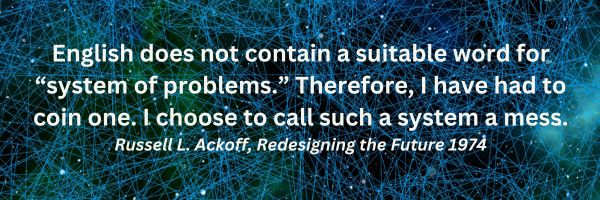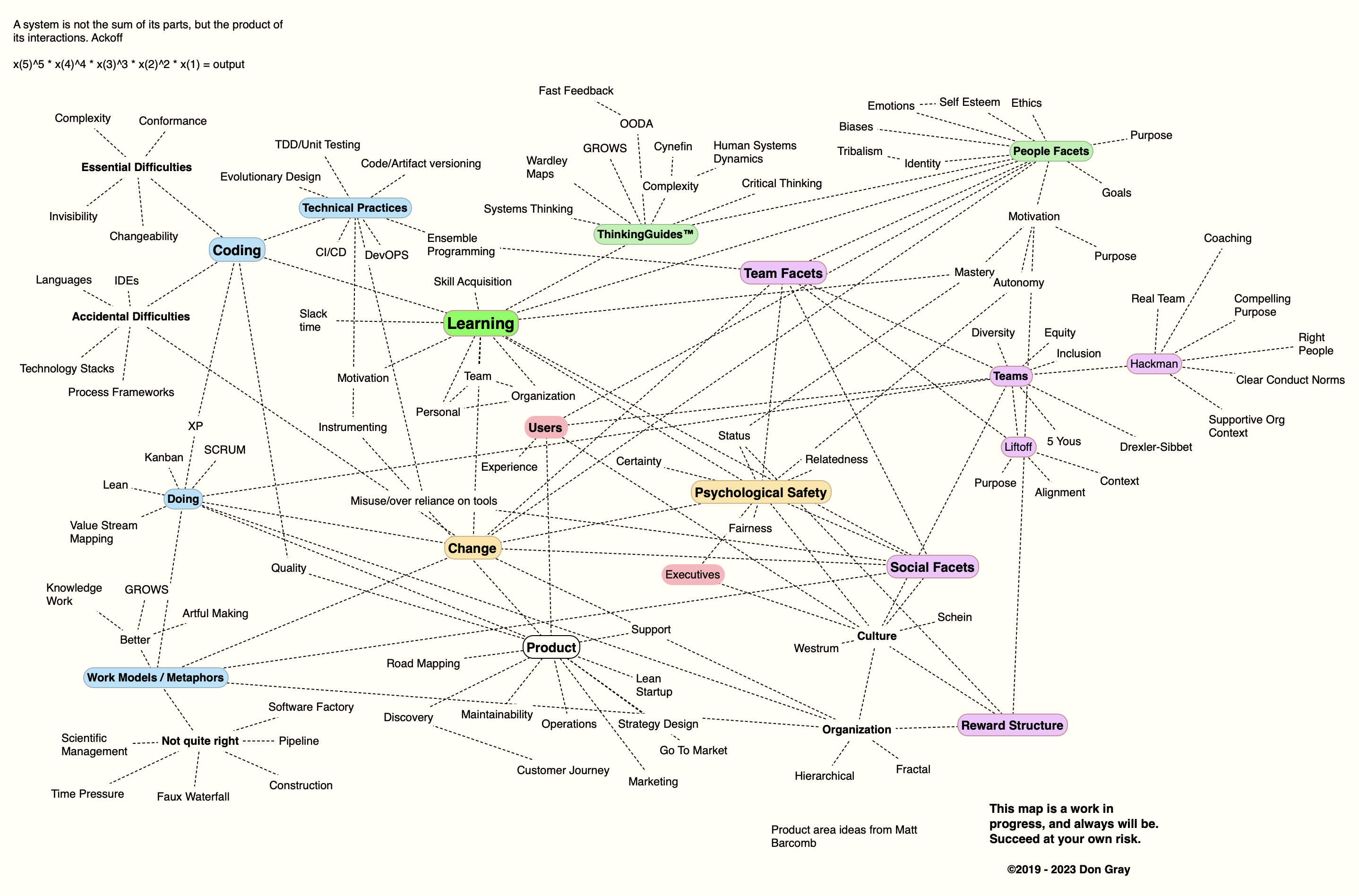
Most of us in the software field are problem solvers. When we face a problem, we try to solve it. But some problems are vexatious—they don’t stay fixed. In that case you may be facing many problems that are all tangled together—a mess.
The Zeroth Rule of Problem Solving
Before you attempt to fix a problem, determine if you have a stand alone problem or a mess.
If you have a mess, a system of problems, well messes can’t be solved. Messes however can be managed. The goal for managing messes is to finish with a smaller mess than when you started.
Often problems involving people become messes. Congruent action can result in a smaller mess.
Congruent action is acting appropriately to difficult interpersonal situations, even though you may be confused, or angry, or so afraid you want to run away and hide. – Jerry Weinberg
Zeroth Rule Corollary 1
If you keep solving the same problem, you’re missing essential elements of the problem, or you have a mess.
Zeroth Rule Corollary 2
An essential characteristic of systems is everything connects to every thing else. Change something and one or more things change somewhere else. And maybe even where you wanted the change!
Here’s a diagram that shows some of the problems we face when developing software–in addition to the customer problem we’re trying to address.

This is why it is so important for leaders in software to think systemically and act congruently. And that’s what we teach in Problem Solving Leadership (PSL).
If you love solving problems, join Esther and me at the next Problem Solving Leadership workshop and discover more models and methods for solving problems especially in groups.
by Don Gray